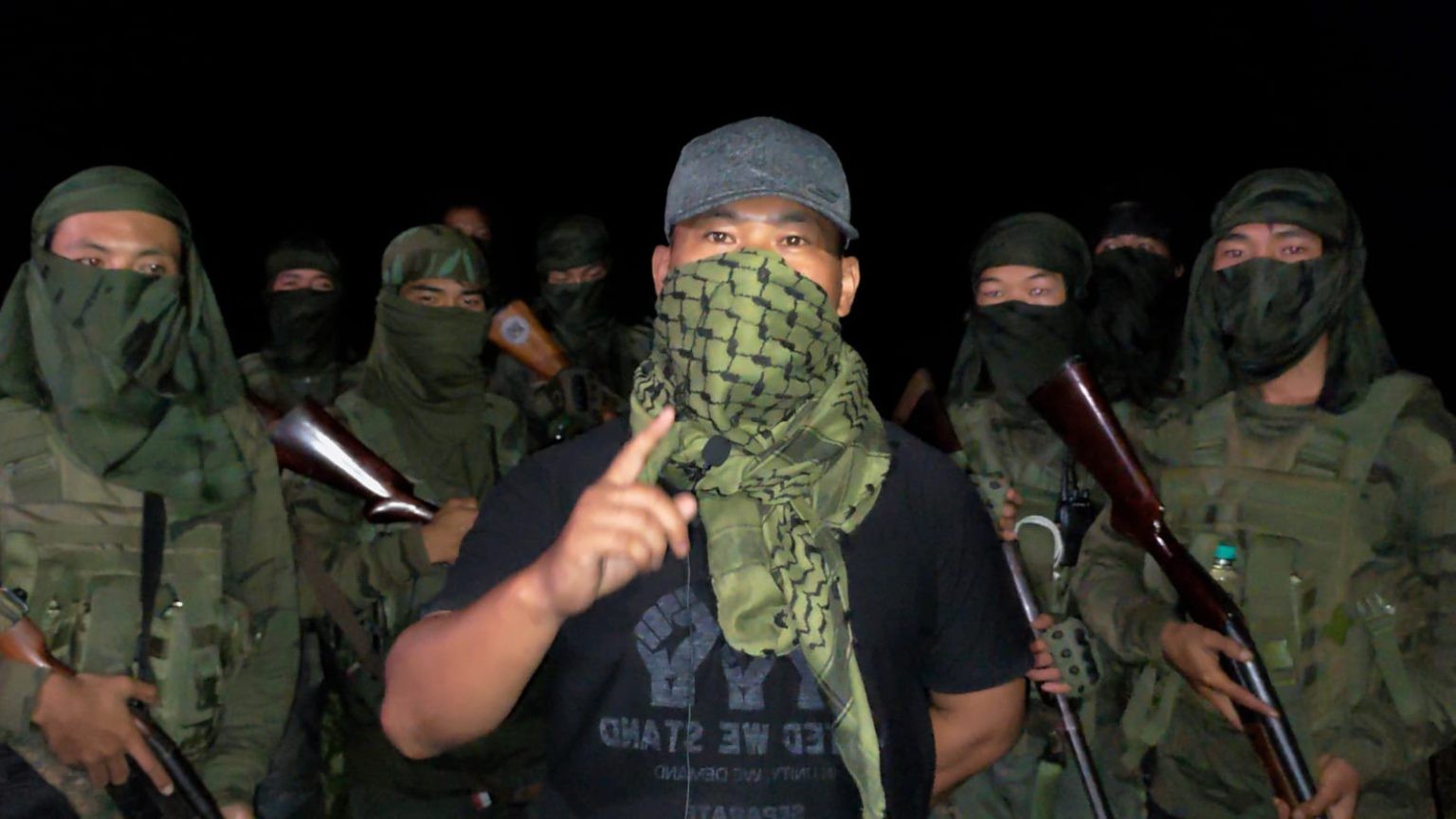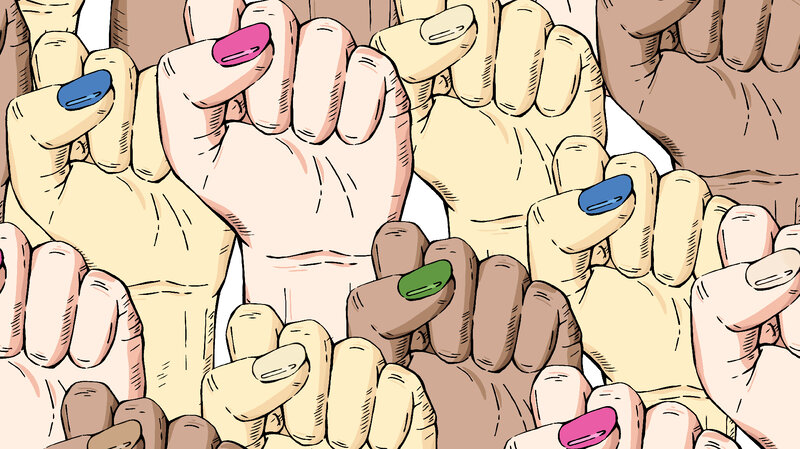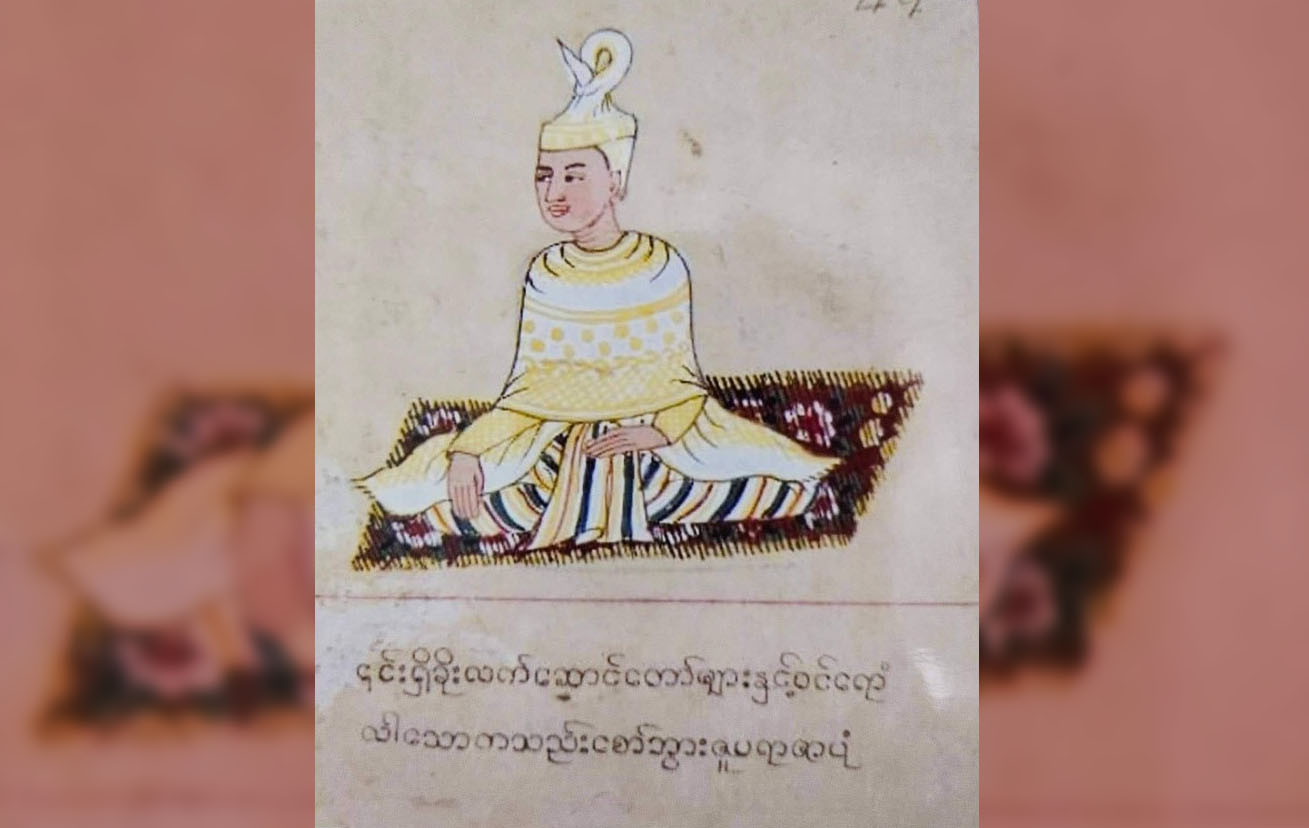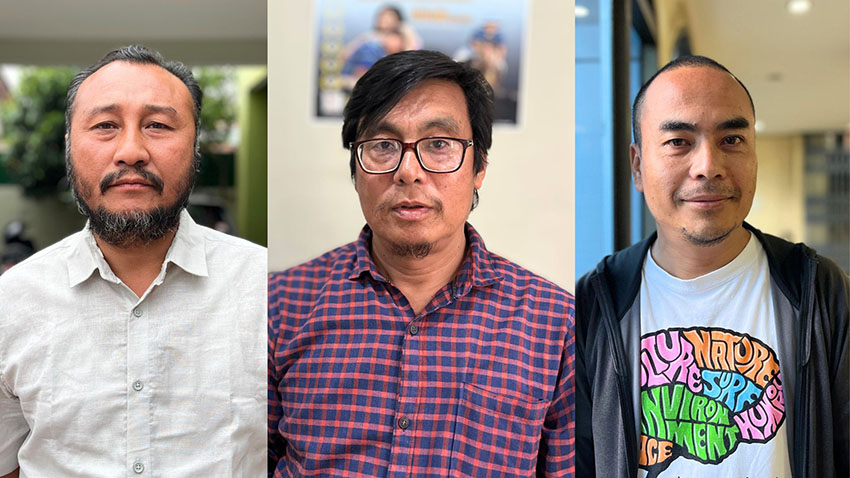A number of Manipur’s civil society organisations (CSOs) and individuals continue to ask why the Government of India (GOI) is not taking military actions against the Kuki-Zomi militants who have been attacking the Meiteis and cleansed them out from the districts of Churachandpur, Pherzawl, Kangpokpi and Indo-Myanmar border town of Moreh under Tengnoupal district since May 3, 2023 and in some areas of Jiribam district.
There were a number of incidents where Indian Army and paramilitary forces particularly Assam Rifles blocked the roads when Manipur Police was going to take reprisal against the Kuki-Zomi militants who attacked the Meitei villages in the peripheries of Manipur’s Central Valley from the surrounding hills.
There were a number of incidents/allegations where Indian Army and Central Security Forces particularly Assam Rifles remained silent spectators when the Kuki-Zomi militants attacked the Meitei villages.
Why the tens of thousands of troops of the Indian Army, Assam Rifles, Central Armed Police Forces (CAPF) like the CRPF and BSF, and the Manipur Police, have not been tasked with carrying out full scale counter-insurgency (CI) operations against the Kuki-Zomi militants while the crackdown on even village defence volunteers rather than the insurgents belonging to Meiteis are more intensified.
Though there is a break of violent attacks from the Kuki-Zomi militants against the Meiteis for the last few months, they continue to occupy the territories from where Meiteis were driven out and control the National Highways (NH) No. 2 (Imphal-Dimapur Road) and NH-37 (Imphal-Silchar Road), the only lifelines of Manipur connecting with the rest of the country.
Even though the Union Home Minister Amit Shah March 1, 2025 announced to ensure free movement of people on all roads from March 8, 2025, the Government of India (GOI) along with President’s Rule in Manipur cannot make the National Highways free from the occupation and controlled by the Kuki-Zomis. On March 8 violence was reported in Kangpokpi along the NH-2, leaving one Kuki-Zomi highway blockader dead and 40 others, including 27 security personnel, injured. No report of police actions against the National Highway blockaders is received yet.
Most recently, Kuki-Zomi groups continue to warn the Meiteis no to cross the “buffer zones” established by Central Security Forces, which legitimises the Kuki-Zomi occupation of the areas and highways as their exclusive territories.
All these (not limited) are because the Government of India doesn’t want to anger the Chin-Kuki militants, according to a report published by Swarajyamag on April 10, 2025.
The “Kukis” claim that they share very close ethnic ties with Chins and are, along with the Mizos and other smaller tribes, part of the larger “Zo” ethnic family by asserting them as “Kuki-Zo” embracing Hmar tribes as of now while some other ethnic groups like Paite assert as Zomi.
As long as the Chin State of Myanmar bordering with southeaster Manipur remains unsettled with the militants there waging bruising battles with junta forces, there is unlikely to be lasting peace in Manipur, says the Report.
The report quoted retired Brigadier SK Sharma who had served in Manipur as saying, “The well-armed and well-trained militants from Chin state are not only taking refuge in Manipur, but have also been training and arming the Kuki militants in the state. The militants from across the border have even actively participated in attacks on Meiteis by Kuki militants.”
The Government of India doesn’t want to trigger angry reactions in Mizoram and alienate the people of that State, and also cost India the goodwill of the Chins in Myanmar. The report quoted a senior official of Ministry of Home Affairs (MHA) as saying, “Mizoram is a very sensitive state and Mizos are very touchy about their ethnic ties with the Chins and Kukis. It would be imprudent to anger them by launching operations against Kuki and Chin militants.”
Moreover, it is also said that the strategic balance that India is maintaining in Myanmar would be affected if operations were to be launched against the Kuki and Chin militants in Manipur.
“We have good ties with the Chin resistance forces and the Arakan Army. That provides us a lot of strategic depth in Myanmar. Operations against Chin resistance forces who have taken shelter in Manipur will be counter-productive. We cannot alienate the Chin forces because that will erode our influence in Myanmar and will also jeopardise major projects like the Kaladan Multimodal Transit Transport Project,” a senior official of the Ministry of External Affairs (MEA) said according to the report.
India’s ambitious Kaladan project, which will reduce time and cost for transportation of cargo, including heavy machinery, to the eastern part of India’s landlocked Northeast region, has been held up due to fighting between the Myanmarese resistance forces and the junta forces.
The Kaladan project involves transporting cargo by sea to the Sittwe port in Myanmar’s Rakhine State, and from there up the Kaladan river to Paletwa in Myanmar’s Chin State from where the cargo will be transported by road to Zorinpui, the entry point to Mizoram.
“It could only be a matter of time before the Chin forces and the Arakan Army gain full control of their respective states. And ultimately, these two states are most likely to become autonomous provinces in a loose federation of provinces that Myanmar seems to be headed to,” Thitinan Pongsudhirak, senior fellow at Thailand’s Institute of Security & International Studies (ISIS) said, according to the report.
If this assessment comes true, India will be dependent on the United League of Arakan (ULA) – the AA is the armed wing of the ULA – as well as the recently formed Chin National Council (CNC) to protect and advance its interests in the two provinces.
Hence, said the MEA official, antagonising the Chin National Council by launching counter-insurgency operations against Chin-Kuki militants in Manipur will be counterproductive for India, according to the report.
“Due to their close ethnic ties, the Chin and Kuki militants function in close coordination and in an integrated manner in Manipur. It is impossible to launch operations against the Kuki militants, which will definitely result in a lot of bloodshed, without inflicting harm on the Chin militants sheltered in Manipur as well,” explained army veteran SK Sharma, the report added.
Moreover, according to experts strategic affairs experts, if the Chin militants score quick victories over the junta forces and gain complete control over the Chin state, it will serve India’s interests.
“It does not serve India’s interests if the Chin resistance forces and the junta forces continue to fight each other and uncertainty prevails in the Chin state. Since the junta forces are losing ground rapidly, it is better for us if the Chin forces win and the CNC gains complete control of the entire Chin state,” the report quoted a strategic affairs expert with a leading think tank in New Delhi.
It is said that because of this, New Delhi encouraged Mizoram Chief Minister Lalduhoma to broker peace between the two primary Chin groups – the Chinland Council and the Interim Chin National Consultative Council – and bring about their merger in February this year.
“The merger of the two primary Chin resistance groups has definitely strengthened the Chin resistance movement. And that improves the chances of Chin forces scoring a decisive victory over junta forces soon,” said the MHA official. New Delhi has, say highly-placed sources, taken some “positive steps” to help the Chin resistance groups as well as the United League of Arakan, the report added.
The report continues that while officials of the MHA and MEA declined to comment on Mizoram’s lone Rajya Sabha MP K Vanlalvena’s visit to Myanmar’s Chin state and his proposal to the Chin groups to join the Indian Union, a senior officer of the Intelligence Bureau (IB) said that New Delhi had been kept informed of the entire ‘project’ which, he added, is “a work in progress”.
“There is a lot at stake for India in Chin and Rakhine. It is very important for us to retain and strengthen our influence and standing with the Chin groups and the ULA (of Rakhine). We cannot afford to alienate anyone in Chin and Rakhine, not with China also planning moves in those two states of Myanmar,” the IB officer said. That is why counterinsurgency operations seem unlikely against the Chin-Kuki militants in Manipur. “Even if strong-arm tactics are used against them, it will have serious consequences across the border and alienate the Chin groups,” he added, according to the report.
The report quoting MHA officials said that once the conflict in Chin state comes to an end, the cadres of the Chin resistance groups would automatically return to their land. “Chin refugees sheltered in Mizoram will also return to Chin state. And then we can leverage the goodwill we have earned to request leaders of the Chin National Council to use their influence and nudge the Kukis to soften their stance and agree to a reconciliation with the Meiteis,” said the IB officer.
“Mizo leaders have a huge influence over Kuki groups and leaders of the Kuki community in Manipur. The Mizo political leadership and civil society groups can easily ask the Kukis to get into an agreement with the Meiteis and enter into a process of reconciliation,” the IB official added.
A resolution of the conflict in Chin state will also affect the neighbouring Sagaing region that borders eastern Manipur and Nagaland.
“Once the fighting ends in Chin with the Chin resistance fighters scoring a decisive victory over the junta forces, things will settle down in Sagaing Region where the Chin groups also operate. And since many (Imphal) valley-based insurgent groups (Meitei insurgent groups) also have safe havens in Sagaing Region, we will be able to neutralise those safe havens with help from Myanmar-based groups,” the MHA official said as reported.
That will weaken the Meitei insurgent groups and ultimately force them to surrender or get neutralised. The neutralisation of the Meitei insurgency is another pre-requisite for lasting peace in Manipur, the report added.












